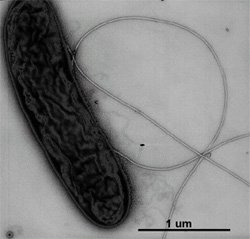
Oh man, this bacteria is so unfair with how it creates energy as an organism.
Hello fellow Steemian,
Welcome to the pen-ultimate episode of Superheroes of the microbe world series as we have reached the 4th episode in this 5 part mini-series. For those of you who are new to this series, this is a series where we take a look at some of the bacteria with incredible superpower that deserves to be in the DC or Marvel comic. Not sure what anyone would call them though if they were to have their own comics; Micro justice league? Flagellated Avengers? I don’t know.
In this episode, we’ll take a look at a bacteria that would make Electro proud (Not by fighting Spiderman though)
Enter Geobacter metallireducens
(Man, the name gives away so many details about this bacteria)
Anyway, like every other living things in the universe, this bacteria needs energy to be alive but unlike other creatures on the planet which uses oxygen or carbon dioxide to generate energy, this bacteria does so using electrical current. Yeap, hands down.
Such thing, should not even be possible for a living organism to do.
Watt a shock-king discovery (Massive amount of electrical puns intended)
How did this bacteria even developed this ability? Well, the push for the evolution of this ability probably came from the fact that it lives in environments low in oxygen. In cellular respiration, the by-product commonly produced is electrons and such is the case with most creatures as well, including us human being. Usually, this excess electron needs to be accepted by something and that something is usually oxygen.
However, living in sediments where oxygen is very scarce, G. metallireducens had to use something else to adopt these electrons and that something else is Iron and Manganese, which is aplenty in its environment. By now you’d probably heard of the word ‘pili’ before from the previous episodes; It’s a common bacterial structure and we’ve learned before that is has helped N. gonorrhoea pull 100 000 times its weight and enables C. crescentus to apply its adhesive effectively to stick to a surface harder than student loans stick to students after they leave college. And pili here is the magic structure again as the bacteria uses its pili to transfer electrons to Iron and Manganese, creating biological wires for current to flow (Pretty cool huh?).
But wait, it gets cooler - What if it runs out of those metals?
Rest assured, another wonder structure to the rescue – Flagellum. Yes, it uses it’s flagellum to swim to places where the environment is rich in these metals, detecting them using chemical signals and migrate accordingly to those signals, a process known as chemotaxis.
But, like most superheroes, this bacteria is pretty sneaky when it comes to using its powers - Researchers didn’t see this bacteria uses electricity by seeing it in action because it only grows its pili and flagellum when it needs to, you know, to save energy. It wasn’t until they sequenced the genome of this bacteria and found the genes that codes for flagellum. I guess you could call that, an Electrifying discover (HAHAHAHAHAHA)
And with that, we have come to the end of this episdoes, as always, if you learned something new from this series, be sure to absolutely smash that vote button and follow me for more awesome science content.
For further readings on this topic and to visit previous episodes, refer to the references and links below.
References:
- Metal-eating microbe Geobacter metallireducens swims
- Geobacter metallireducens accesses insoluble Fe(III) oxide by chemotaxis
- Batteries From Bugs
Links to previous post:
Being A SteemStem Member
Interesting topic few days back I also written an article on such group of bacteria, but mine was little bit different on how they navigate themselves but yeah you also mentioned on how they find their source.....
Just carry on the good work ...👍👍😊Nice one @thethinkingdr
Thank you so much for following the series :)Oh i’ll check it out now :)
This post has received a 0.07 % upvote from @drotto thanks to: @banjo.